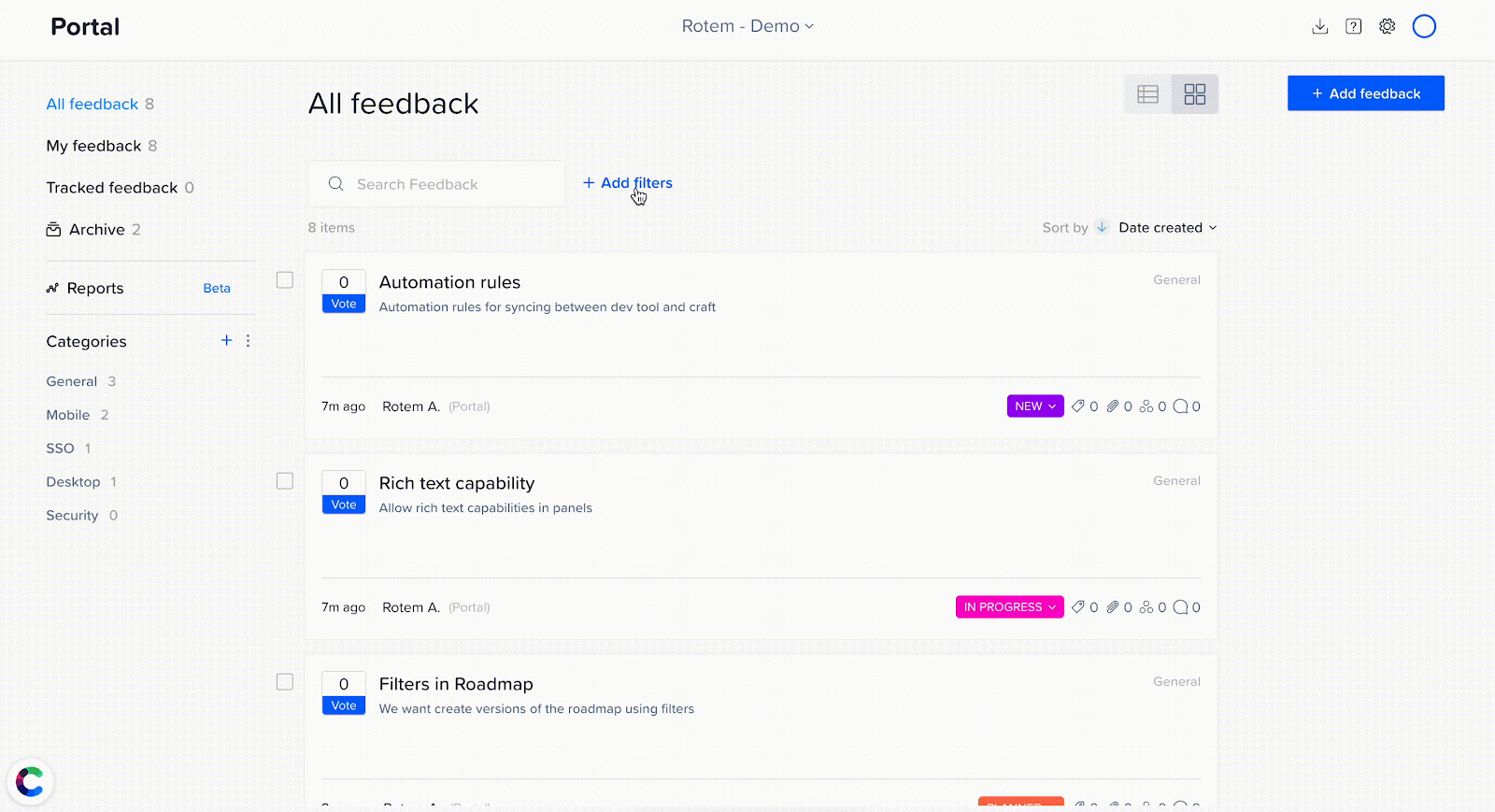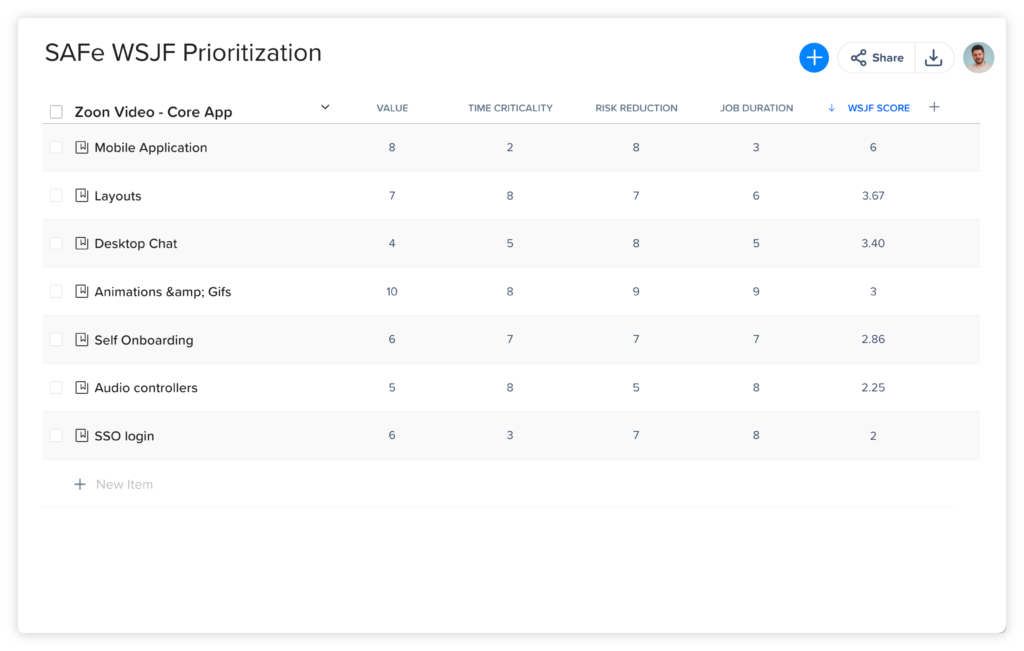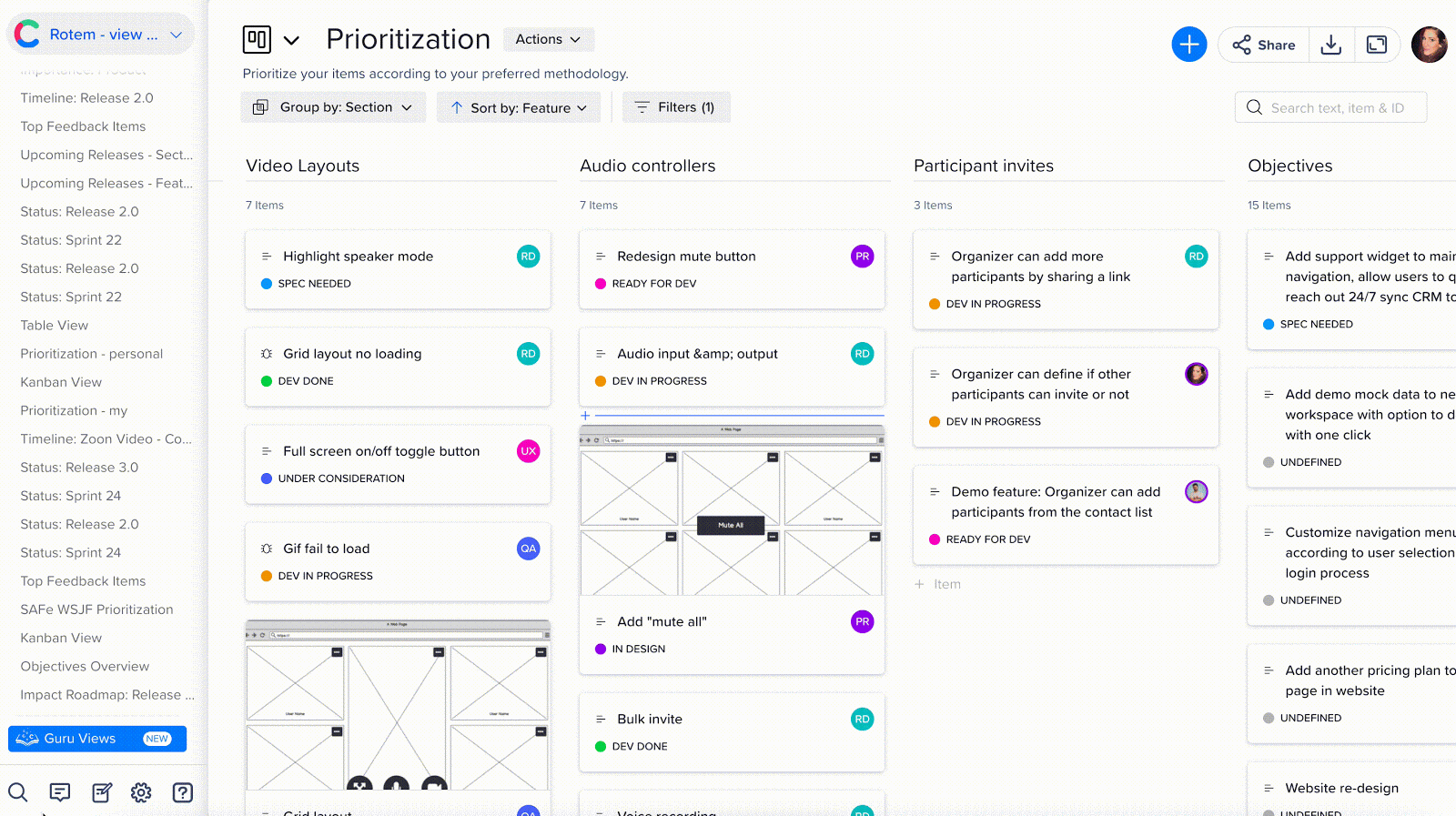Home > Blog > Product Prioritization Frameworks: Why Your Product’s Success Depends on Them
Product Prioritization Frameworks: Why Your Product’s Success Depends on Them

What Is Product Prioritization?
Product prioritization is the process of evaluating items on a product backlog — features, epics, stories, bug fixes, or entirely new products — and ranking them according to which ones promise to deliver the most value for the work involved.
After ranking these items using one or more product prioritization frameworks, a product team can then meet with the Developers to discuss how to break the higher-priority activities into actionable tasks.
And if the team has conducted its prioritization exercise the right way — determining how each priority item supports a specific business objective — they will also be in a better position to communicate the strategic reasoning and goals to the Developers who will be working on these items.
How Do Product Experts Prioritize?
The key question is, which product prioritization frameworks should your team use? What methodologies will help you make the best strategic decisions about where to invest your time and resources for the biggest potential payoff — for both your customers and your product’s success.
Expert product teams can choose among many prioritization frameworks, some of which we’ll discuss below. And as we’ll also explain, different frameworks are better suited to specific circumstances. There is no one-size-fits-all prioritization framework that’s right for every organization under every scenario.
Value vs. effort: the common theme among prioritization frameworks
Despite their differences in focus and emphasis, most of these formulas work in a similar way: helping the team find the right strategic balance between effort (cost and complexity of the work) and potential value (ROI).
Whichever prioritization framework they use, most product teams are trying to determine whether each item on their list will help them achieve one or more of the following objectives:
(Benefits)
- Increase revenue
- Increase market share
- Reduce customer churn
- Delight customers
- Address specific user requests, complaints, or other feedback
- Capture a new user persona
- Enter a new industry or market
At the same time, most frameworks also take into account the potential effort involved in working on each item. These effort-related metrics act as a counterbalance against that item’s potential benefits, giving the product team a better sense of the cost or risk involved. For example, most prioritization frameworks require inputs about such anticipated costs as:
(Costs)
- Number of hours (or story points for agile teams) to complete the work
- Financial costs to the company
- Opportunity costs (by delaying or foregoing the development of other items on the list)
Now let’s review a few of the most widely used frameworks and discuss how to know which ones are right for your team.
How to Select the Right Product Prioritization Framework
The key question to ask when deciding which prioritization framework to use is: What are we trying to accomplish?
An example of product prioritization
The Kano model, for example, is narrowly focused to help you determine the degree to which an item on your backlog is likely to delight your customers.
As product expert Daniel Zacarias explains on his Folding Burritos blog, the Kano model ranks each proposed feature into one of four categories: performance (the customer becomes more satisfied as you enhance the feature — usually on a linear scale), must-be (the customer will expect it), attractive, or a “delighter” (this feature will make the customer happy or even thrilled), and indifferent (the customer won’t care much whether it’s there or not).

Leverage user experience insights in your decision-making
It’s worth noting here that to gain the most value from the Kano model, you’ll want to use more than your gut instinct when trying to determine which items on your list have the greatest chances of delighting customers.
You’ll also want to have feedback from users about their experience interacting with your product (or your mockups or wireframes if you don’t yet have a product on the market). With that in mind, it’s a good idea to use a product management solution with a dedicated feedback portal, like the one built into the craft.io platform, to enrich your prioritization exercises with more real-world data.

Other prioritization examples
In most cases, however, you’ll be taking a broader prioritization approach than simply focusing on how your backlog items could affect customer delight.
Your team will want to know, for example, the degree of a proposed feature’s reach (how many existing and new customers it will affect), impact (how much it will increase conversions or delight users), your team’s confidence about your estimates, and the feature’s effort (how long and how many people it will take to complete).
For these scenarios, you’ll want a broader framework like RICE prioritization.
As Intercom describes it, the RICE formula gives you a “total impact per time worked” score for each item. And because you’re applying a consistent set of metrics to each item, you can create a truly apples-to-apples comparison when weighing a list of items against each other to decide which will gain a spot on the roadmap.

Then there will be scenarios, particularly if you’re a Product Manager for a larger organization, when you’ll want to use a prioritization framework focused primarily on the financial impact of putting off work on an item so your development team can complete other tasks first.
For those scenarios, you might choose the Weighted Shortest Job First (WSJF) framework. And if you’re working in a large enterprise with hundreds or even thousands of Developers, you might choose the Scaled Agile Framework (SAFe) version of this framework — called SAFe WSJF prioritization.
As the team behind Scaled Agile explains, SAFe WSJF takes an economic view of product prioritization, focusing on:
- Making financial choices continuously
- Ignoring sunk costs
- Elevating the “cost of delay” as the most important metric to quantify

Pro tip: move seamlessly between prioritization frameworks
As you might have noticed, your team could probably benefit from several of these prioritization frameworks under various circumstances. And there are many other useful frameworks — such as MoSCoW, Opportunity Scoring, and Now-Next-Later — which could also serve your team well depending on your objectives and needs at the time.
One best practice for expert product teams is to subject their backlog items to more than just one prioritization framework. For example, a team might want to score a list of proposed features with a focus on customer delight (in which case they might use Kano) and then with an emphasis on costs (where they’d jump to WSJF).
The most efficient and convenient way to do this is to use a product management solution with several built-in product prioritization frameworks. That way, you can easily apply one framework — say, MoSCoW prioritization — to your product backlog items, and then get a “second opinion” by simply clicking a few buttons to quickly subject those same items to the Opportunity Scoring model.
Why It’s So Important to Prioritize Your Product Work
No matter how efficient and experienced you are as a Product Manager, you’ll always have more ideas, requests, and stakeholder suggestions for your products than you’ll have the budget and development resources to build in the timeframe you’d like.
That’s why you’ll always need to maintain both a product backlog and a roadmap. Before any item earns a piece of valuable real estate on your roadmap, you first need to subject it to a data-driven scoring exercise — to determine its potential value to your company against its likely costs to complete.
And to make each prioritization exercise both as strategically useful and as easy as possible, you’ll want a product management platform with many of the most widely trusted prioritization frameworks built right in — like craft.io.



